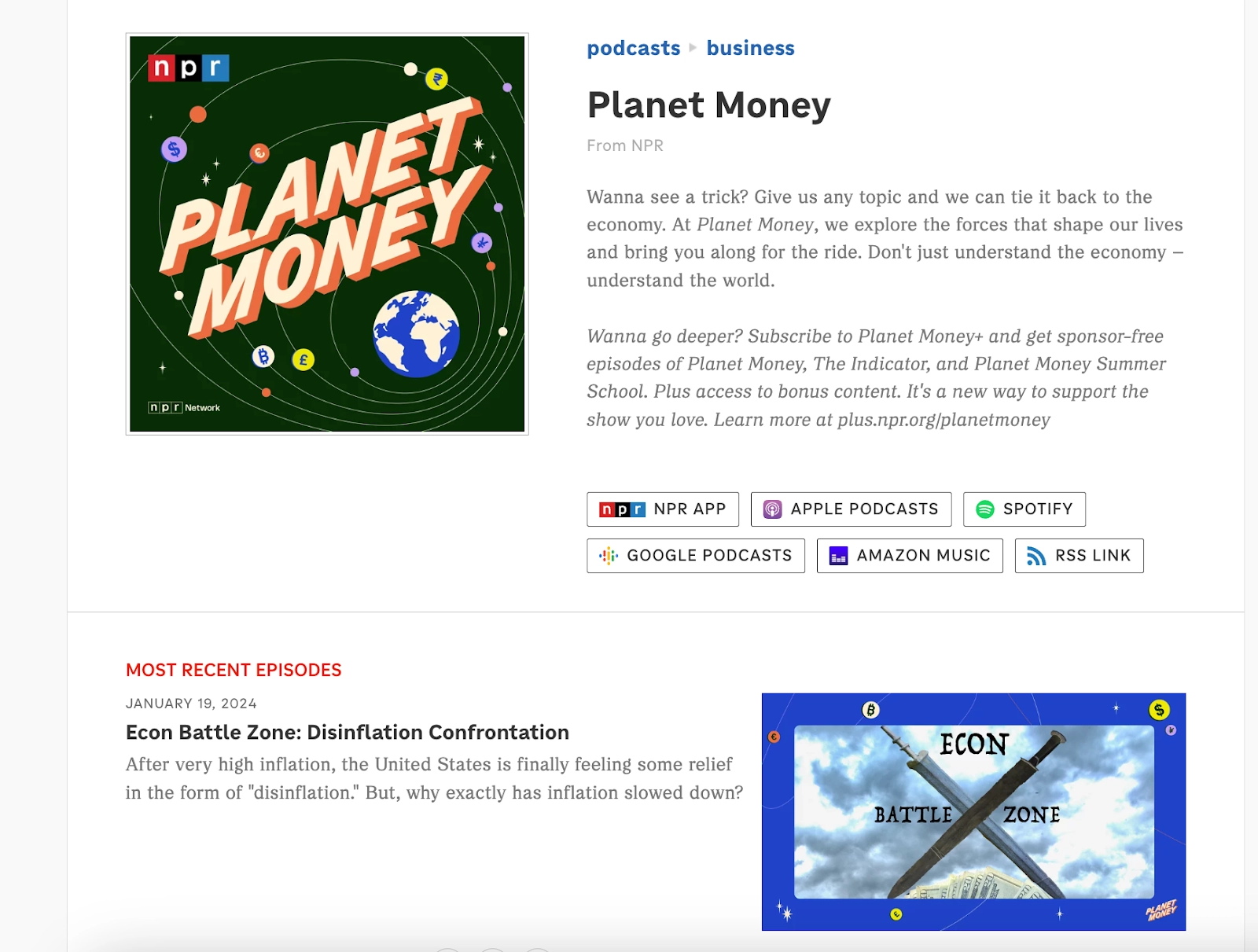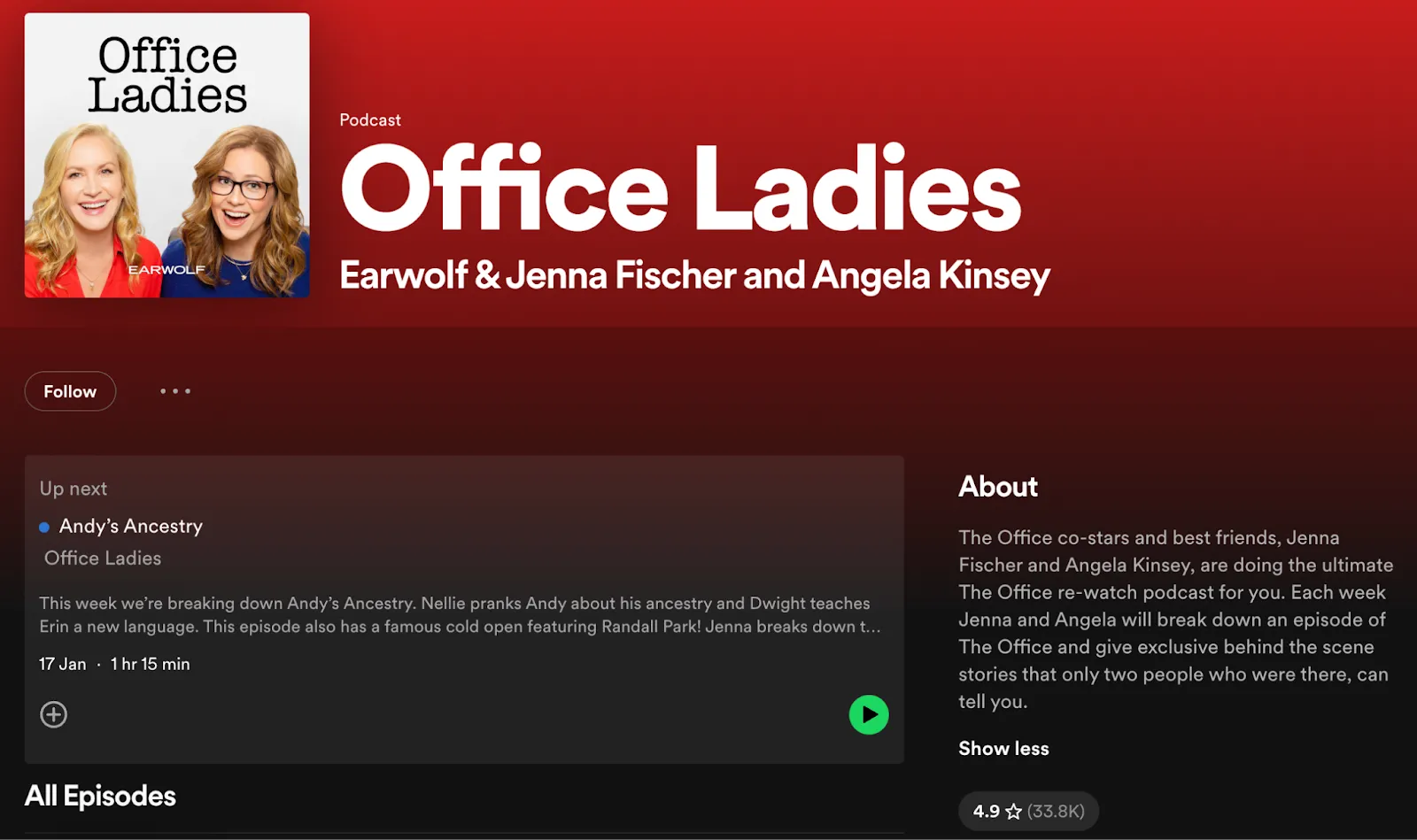You’ve started a podcast, published a few episodes, and maybe gotten a few new social media followers who say they came because of the show.
But is your audience growing week over week, or are you just picking up a few listeners here and there at random? Are they coming from a consistent source, or all over the internet? And are you hearing compliments because your show is genuinely great, or because the people who don’t like it don’t care enough to tell you what you’re doing wrong?
Questions like these are why it’s important to keep track of podcast metrics. That’s data about who’s listening, where they’re coming from, and how long they’re tuning into each episode.
Having hard data on your listeners’ habits can give you a sense of what’s working and what’s not; it can help you fine tune your strategies for the show’s content as well as your advertising, and set realistic goals for the show going forward. This guide shares how to uncover that information using the most important podcast metrics.
10 key metrics for measuring podcast success
We live in a data-saturated world, and once you start looking for information on key metrics, it can feel overwhelming. Podcast hosting platforms like Apple Podcasts and Spotify will share a good amount of listener data with you, but you need to figure out how to sort through and interpret what you’re seeing.
If you’re after more granular insights, you can sign in to Apple Podcasts Connect or check Spotify’s podcast analytics to see detailed audience stats and trends.
Here are the 10 measurements for podcast analytics we think are especially worth paying attention to if you’re interested in learning how to measure podcast performance.
1. number of listeners
The number of listeners your podcast has determines your audience size and depends on how niche your podcast content is and how long you’ve been doing your podcast.
With listener data, you can:
- See how many people have actually played your podcast episode
- Understand your audience size, your show’s popularity, and overall performance
- Analyze how users engage with your shows and episodes and listening completion rates from unique devices per episode
- Help you collaborate with potential advertisers and set your podcast advertising rates
We can slice listening figures a few different ways, the first being the number of podcast listeners you get per episode. Potential advertisers will ask about this number, as it convinces them you have a strong, growing audience.
Unique listeners is a different metric than downloads, since a single person can download the same episode multiple times, and it’s also distinct from play (or “listen” or “stream”), since you can repeatedly listen to a single episode.
Spotify, for instance, counts listeners based on the number of people who have started an episode and listened for any amount of time. To boost this metric, you’ll need to put time into podcast marketing or make shows that generate tons of word-of-mouth buzz—preferably both!
🛒 Start shopping: The 11 best podcast recording software options for pro-level podcasts
2. downloads and streams or plays
When someone downloads an episode, the audio file saves on their smartphone or other device for listening later. Streams and plays happen when someone listens to a podcast episode for some amount of time—Spotify defines a stream as when a listener listens for at least 60 seconds; Apple Podcasts defines a play as when a listener listens for more than 0 seconds.
Podcast downloads are a key metric as they indicate your podcast’s reach, show how many devoted listeners you have, and impact the revenue your podcast earns. The metric also provides a rough growth estimate and data for monthly comparisons.
While you can get insights into how many people are downloading episodes, it doesn’t tell much about whether people actually listen to them. Streaming-based metrics provide stronger audience analytics because they show:
- The content people actually listen to
- Number of times people play the episodes
- Episodes that resonate and those that don’t
- Your show’s general listening trends
3. listener engagement
A successful podcast hinges on a variety of performance metrics, including conversion and immediate return. But there’s an easier way to judge your show’s success: by reviewing the audience engagement levels your show delivers.
To measure your show’s engagement, review metrics like:
- Time spent listening: How much time listeners actually spend listening to an episode measured in seconds, minutes, or hours.
- Listen-through rate (LTR): Percentage of each episode listeners stick around for through an entire show, which measures how listeners engage with audio content. A good LTR sits in the range of 90% or higher. Lower LTRs could indicate listeners aren’t engaging with ads and either skip them or stop the stream altogether.
- Popular drop-off points: How long listeners stick around and where you might be making mistakes in your show. For instance, if you notice high drop-off rates in a particular segment, subject, or with a particular guest, you’ll know what not to do and focus on what your audience wants, so you can make your best, most loved content.
There are many other ways to measure podcast community engagement. For example, do your listeners participate during shows? Do they respond to your polls and Q&As? Do they offer feedback or ratings? All these can indicate an engaged community and can be improved by treating your listeners like collaborators while using creative ways to inspire them to interact with your show.
⚡ Pro tip: Boost engagement levels by creating a podcast website, which serves as a central hub where your audience can find your episodes, transcripts, show notes, merch, and more. You can even use it to post SEO-optimized blog posts repurposed from your podcast content so search engines like Google can find your content.
 |
4. listener retention
Want to know whether your content impacts listener behavior? You can measure that by using the listener retention metric.
From your episode analytics, you’ll find a breakdown by second indicating:
- When listeners skip, drop off, and stick with each podcast episode
- Average listening time per episode
Analyze listener retention per episode and compare skips and high drop-offs with the episode or show content. For example, having fewer streams than episode starts would indicate your listeners drop off within the first minute.
Check for any glaring patterns to identify the segments or episodes that hold your listeners’ attention—or lose it altogether. Then, note what isn’t working and change or improve them as you go along. Keep doing what works well and encourage feedback from listeners to get their perspective, so you can deliver what they want.
5. Demographics, location, and device type
Knowing what device and app or platform your audience is listening to your podcast from, and demographic information—like age, gender, and location—can help you curate content that resonates with them. For example, if most people tune in via YouTube, you can experiment with live podcasting and repurpose the recording into evergreen video content for your channel.
You can also use this podcast metric to discover:
- Where to host live events
- Which platform to advertise on
- Which local brand you can pitch for sponsorships
⚡️Pro tip: Listeners might tune into your show across different platforms. But repurposing a single episode for multiple channels can quickly get boring. Find Good Clips is an AI-powered Descript feature that can analyze your video and repurpose it into multiple different snippets that are perfect for social media.
5. demographics, location, and device type
The best advice on the internet is to never read the comments section. But in this case, you kind of have to, so just remember to take everything you see—positive and negative—with a grain of salt.
It’s worth paying attention to your ratings and reviews so you can:
- Know what type of content works best with your audience
- Get helpful suggestions for improving your content and overall show quality
- Learn about your show’s impact
- Market your podcast and boost its growth and ranking on podcast hosting platforms
- Build your show’s credibility and reputation
If your podcast receives lots of reviews and high ratings, for example, it means more people listen to your show and approve of your content, increasing the likelihood of being found by other listeners.
Take the Office Ladies podcast, for example. The show, which gives exclusive behind-the-scenes stories based on episodes of The Office, enjoys high ratings on Spotify (4.9) and Apple Podcasts (4.8).
 |
The key to its success lies in the show’s hosts, Jenna Fischer and Angela Kinsey, who co-starred on The Office TV show, and are besties in real life. The insider knowledge they share and their close friendship infuse a quirkiness into each episode, making them engaging, fun, and worth listening to.
7. consumption rate
Consumption rate refers to how long your podcast audience actually makes it through your episode. Are they hanging on to every last word, or dropping off midway through?
You want people to be engaged for most of the show, so if your average consumption rate is anything less than 80%, consider shortening your episode length or breaking it up into segments that will help listeners feel like things are moving along.
Luckily, some podcast apps have analytics tools that measure and report listeners’ consumption rates. The exact data points may vary by platform, but you’ll find information like average minutes listened or percent of episode listened to.
Monitoring this metric lets you know that people have at least listened to more than your intro and you can understand what worked well about each episode. If an episode has a high consumption rate but a few downloads, for instance, the content may have been good. But you can review your marketing strategy and improve on your promotion efforts to get enough people to press play.
Or, if an episode has a low consumption rate and a high number of downloads, it could mean the show was well marketed but the content wasn’t engaging enough.
Consumption rate can also help you determine where people are most likely to hear ads in an episode and know where to tweak your interview style or editing. This way, you’ll ensure your content remains engaging throughout the show.
8. podcast chart rankings
It’s difficult to tell exactly how podcast directories rank shows, but generally, it will depend on:
- Episode downloads
- Number of subscribers
- Reviews and ratings
For example, Apple Podcasts Charts show a dynamic view of the most trending and popular content on Apple Podcasts, so listeners can explore and discover what to listen to next.
However, Apple charts don’t reflect all-time listening records and are not a measure of the largest podcasts by listenership. Instead, they calculate top shows and episodes using a mix of metrics like listening, show follows, and episode completion rate.
Podcast charts also measure the total subscriptions, engagement with subscriber episodes, ratings, reviews, and shares, to indicate the quality and popularity of the podcast.
 |
But remember: Apple Podcasts Charts only apply to Apple Podcasts. It doesn’t take listeners from other podcast listening apps, like Apple Podcasts or Spotify, into account. So, your Apple Podcasts chart success might not completely represent your broader podcasting career.
Spotify’s podcast charts, for instance, are popularity-driven. Your show should be highly popular among listeners on the Spotify app. This means listeners should download new episodes as soon as they’re published and listen through most of or the entire episode.
9. revenue and ROI
Listeners are great, but if it’s sales you're after, it pays to look at per-episode revenues to see which topics and tactics had the biggest payoff and see where to optimize and better target your ads.
At the same time, brand awareness is an important—though less tangible—piece of the puzzle. If more people are recognizing and talking about your show, that familiarity can translate to trust and eventually higher revenue.
How you measure your show’s income will depend on your podcast monetization strategy. If you promote paid content or services, you’ll need to set up a way to track channel traffic to understand how well you’re able to convert people clicking play into people clicking buy.
You can use UTM links, which have code that can help you track how customers ended up on your page using custom parameters. For instance, you might track the medium (like whether they landed there via social media or your show notes), or if a specific campaign (like a sale or a call for new memberships attracted them).
If you want to boost your conversion numbers, consider spending more time on calls to action in the podcast — not just talking about the product, but actively encouraging listeners to make a purchase.
But the biggest deal of all metrics is your return on investment (ROI). Put simply, you’ll want to calculate how much you’re investing in the show versus how much you’re earning from it. If making the podcast is part of a job, you can include staff time in your calculations — but even if you can’t easily put a dollar value on your time, don’t forget to factor it in when you consider whether what you’re making is worth the effort it takes to get it done.
But the biggest deal of all metrics is your return on investment (ROI). Put simply, you’ll want to calculate how much you’re investing in the show versus how much you’re earning from it. If making the podcast is part of a job, you can include staff time in your calculations—but even if you can’t easily put a dollar value on your time, don’t forget to factor it in when you consider whether what you’re making is worth the effort it takes to get it done.
🎙 Keep learning: 12 podcast tips to take your show to the next level
10. creator growth
Hard numbers are useful when evaluating your podcast growth, but it’s equally important to assess your progress as an individual creator.
To evaluate creator growth, review your:
- Skills: How much have your podcasting skills, like planning, recording, interviewing, editing, and promotion, have improved since you began?
- Self-confidence: Starting a podcast can be a little daunting. The technology and lingo required can be overwhelming for beginners. Look back on your podcasting journey and evaluate whether your self-esteem and comfort levels have improved since you started.
- Niche expertise: Review your podcasting goals, especially if you run a niche-specific podcast. For example, you may aim to be more knowledgeable in your industry or field or get to know a lot more about your audience’s interests.
A podcasting software tool to help you grow
If you could pick only one tool to grow your brand’s podcast, you can’t go wrong with Descript. It’s trusted by thousands of creators and top podcasts, including Planet Money, Finding Fred, and Sway.
With Descript, you can record, edit, and fine-tune your podcast from a single dashboard.
The podcasting suite is easy to use and affordable for all users—no matter your experience level. And it boasts robust features and functionality for recording, editing, and publishing podcasts with the power of AI, including:
- Studio Sound: Boosts audio recording quality in a single click
- AI Voices: Makes multiple clones of your voice to create a roster of different emotions, tones, and accents
- Podcast Show Notes: Generates show notes, with chapters and time codes
- Script Generator: Quickly draft scripts for your podcasts saving you the time you would've spent getting started
- Social Post Writer: Helps you save time sharing your podcast on social media
Ready to take the leap and create a world-class podcast? Give Descript a go for free using the web or desktop app, where premium features come as standard.
podcast metrics FAQs
What are good metrics for podcasts?
While good metrics for a podcast depend on many factors, the median show gets 421 downloads per episode, according to the 2023 Podcast Marketing Trends report. If you get more than 1,120 downloads in the first 7 days, you’re in the top 5% of podcasts, according to Buzzsprout.
How do you measure the success of a podcast?
You can track your podcast’s progress by examining key stats through your hosting platform’s analytics or apps like Apple Podcasts and Spotify. Look at:
- Listenership: Number of people who press play on each episode.
- Downloads: How often episodes are saved for offline playback.
- Audience engagement: Shares, comments, or social media mentions that show how invested listeners are.
- Ratings and reviews: Feedback on podcast directories, which can improve visibility and help you refine content.
- Return on investment (ROI): Income or leads generated compared to time and money spent producing episodes.
- Chart ranking: How your show stands alongside similar podcasts in its category.
Interpreting these numbers in context with your show’s goals—like education, building community, or driving sales—helps you see if your podcast is really resonating with listeners.
- Listenership
- Downloads
- Audience engagement
- Ratings and reviews
- Return on investment
- Chart ranking
What podcast stats should I track?
- Listener demographics
- Audience engagement
- New subscriber growth
- Podcast chart ranking
- Consumption rate
- Retention rate
- Number of unique listeners
What is a good CPM for podcasts?
Podcast CPM (cost per thousand impressions) varies, but many podcasters see rates between $15–$40 for a 60-second host-read ad. Actual rates depend on factors like audience size, the show’s category, and listener demographics. Sponsors often pay more if your podcast has highly engaged listeners or covers a specialized niche.









































